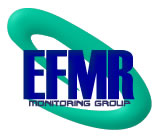Wednesday, March 26, 2008
Nuclear Relapse: Three Mile Island at 29
by Eric J. Epstein
The nuclear industry has announced it can cure global warming and make America energy independent. The problem is the numbers don’t add up, and our cars don’t run on uranium pellets. Don’t be fooled again by the same people who brought you electricity “to cheap to meter.” Ask your friendly nuclear power plant to answer four questions:
1. Nuclear waste:
Every nuclear reactor produces 30 metric tons of high-level radioactive waste per year. This is nuclear garbage without a forwarding address sitting in a swimming pool in your backyard. Three Mile Island is home to hundreds of tons of spent fuel, and a melted reactor that has not been decontaminated or decommissioned. An island in the middle of a river that empties into the Chesapeake Bay is not an ideal nuclear waste site. When is the nuclear industry going to solve the problem they told us not to worry about 40 years ago? Think about it: Would you buy a house from a developer who promised to install a sewer line 40 years after you began
flushing?
2. Greenhouse gases:
Nuclear fuel production in America creates chlorofluorocarbons (CFCs). The enrichment of uranium in Kentucky releases large amounts of CFCs which are more damaging as a global warmer than carbon dioxide. CFCs remain the primary agent for stratospheric ozone depletion. The production and importation of chlorofluorocarbons was banned as part of a global treaty (the Montreal Protocol; 1987), and by the federal government (Clean Air Act amendments; 1990). CFCs were supposed to be phased out, but the chemical can still be used until supplies
run out.
From the moment uranium is mined, milled, enriched, fabricated and transported it releases large quantities of airborne pollutants. What is the nuclear industry’s plan to cut its greenhouse gas emissions?
3) Water and fish kills:
Communities and ecosystems that depend on limited water resources are adversely affected by nuclear plants which draw millions of gallons a day and return the back wash at elevated temperatures. Every year millions of fish (game and consumable), fish eggs, shellfish and other organisms are sucked out of water sources and killed annually at Peach Bottom and Three Mile Island. During the 2002 drought, 34 counties were designated as “drought emergencies” and another 31 were placed on “drought watch. Last fall, 53 counties were placed on “drought watch.” In both instances, Dauphin, Lancaster, and York Counties (where Three Mile Island and Peach Bottom are located) were placed on the “list” due to precipitation deficits.
Yet both plants were exempted from water conservation efforts. Should nuclear power plants continue to be exempt from drought restrictions?
4. Cost of fuel:
The price for uranium ore rose every month in 2007 peaking at $120 a pound. Nuclear fuel, which currently sells for $74 a pound, is predicted to crest at $95 later this year. This was the same “low-cost” fuel that sold for $7 a pound in 2001. America imports 84% of its nuclear fuel from “dependable foreign allies” like Russia and Kazakhstan as well as Australia (when their mines aren’t flooded).
Why is America transferring a foreign oil dependency for an expensive, foreign nuclear fuel dependency?
Memory is a funny thing: It only works when activated. It’s your wallet. It’s your river. It’s your backyard.
Sincerely,
Eric Epstein, Chairman, TMI-Alert, Inc.
Harrisburg, PA 17112
717-541-1101
Three Mile Island Alert , Inc., a safe-energy organization based in Harrisburg, Pennsylvania and founded in 1977. TMIA monitors Peach Bottom Susquehanna, and Three Mile Island nuclear generating stations. Mr. Epstein is also a member of the American Nuclear Society.
Subscribe to:
Post Comments (Atom)

No comments:
Post a Comment